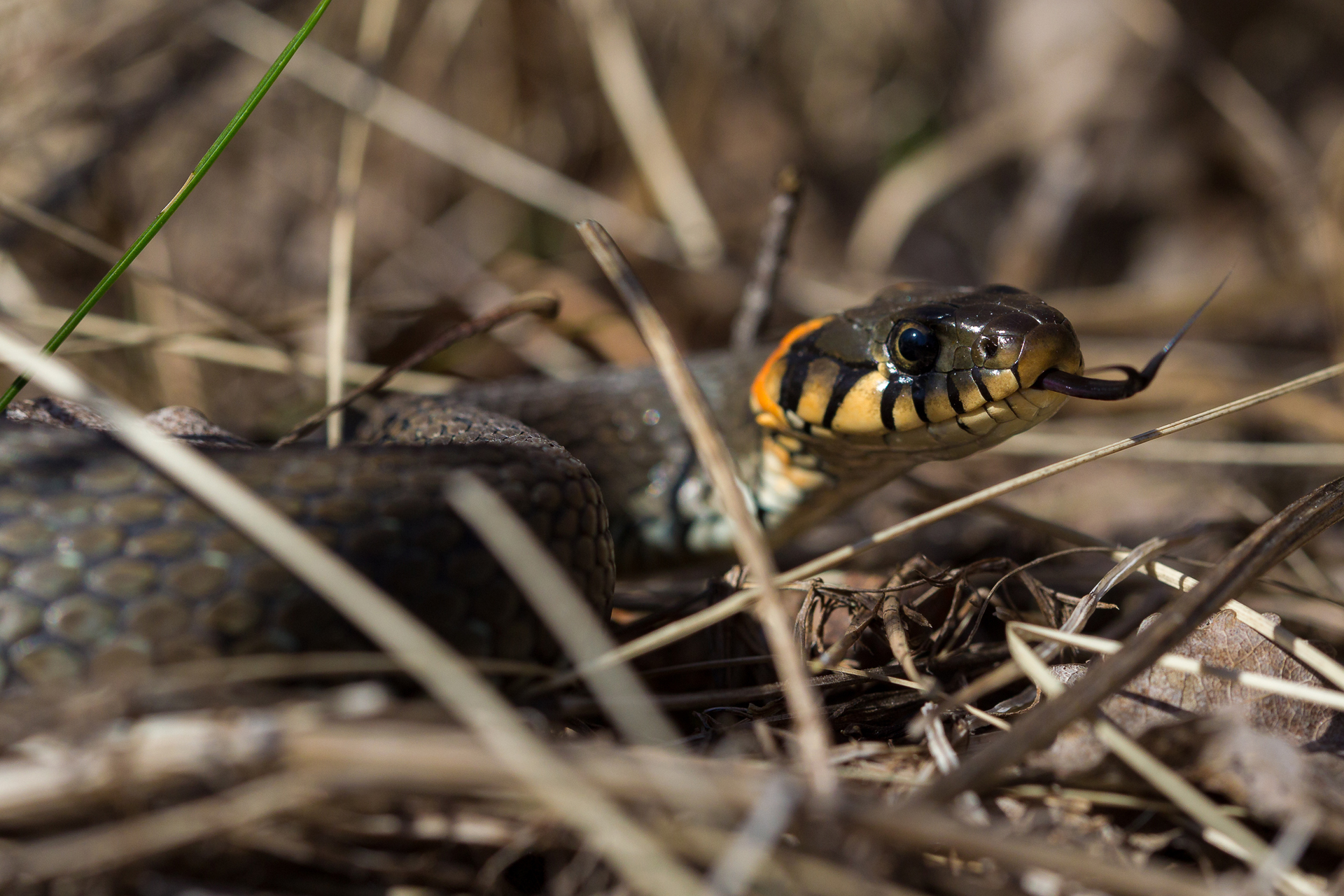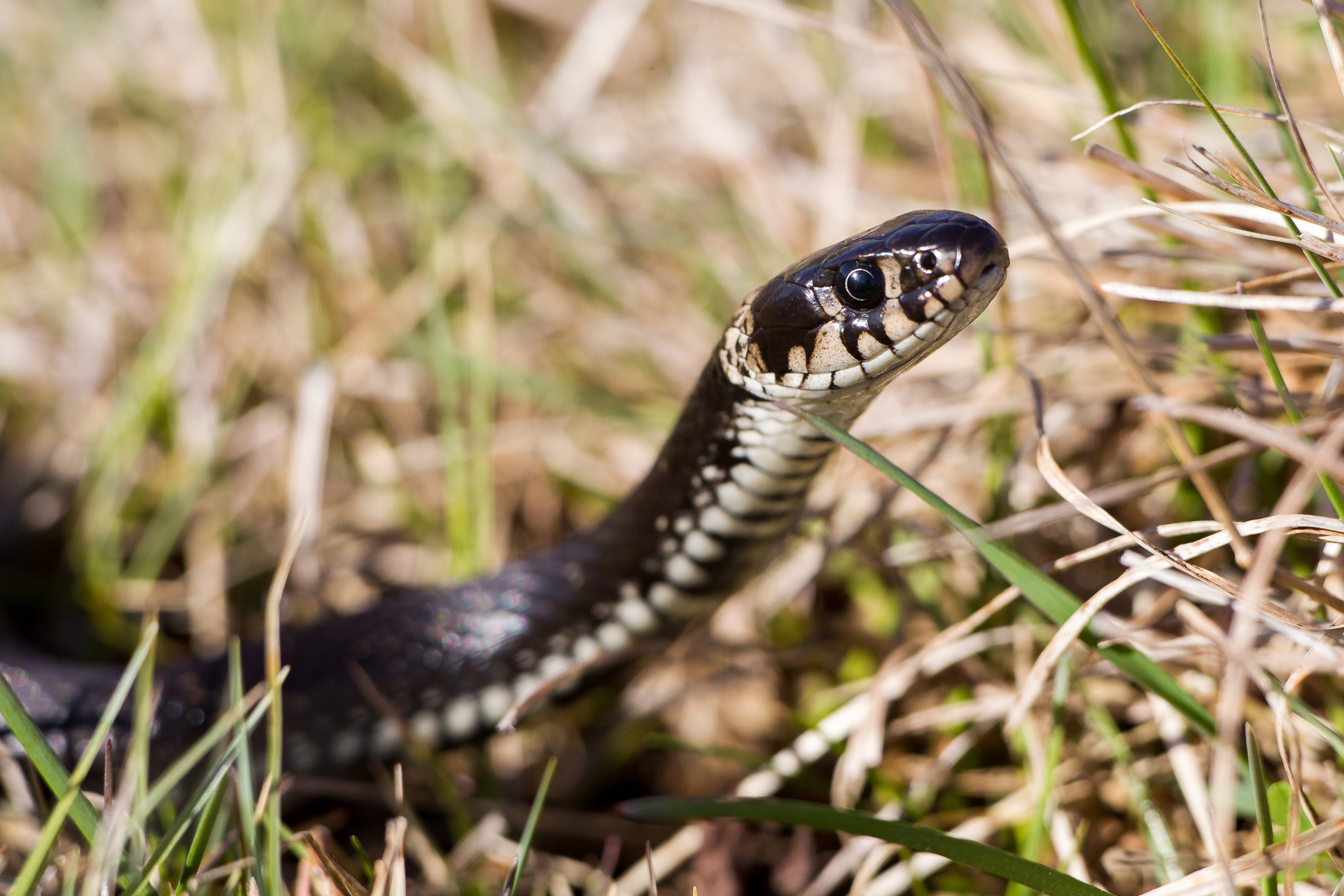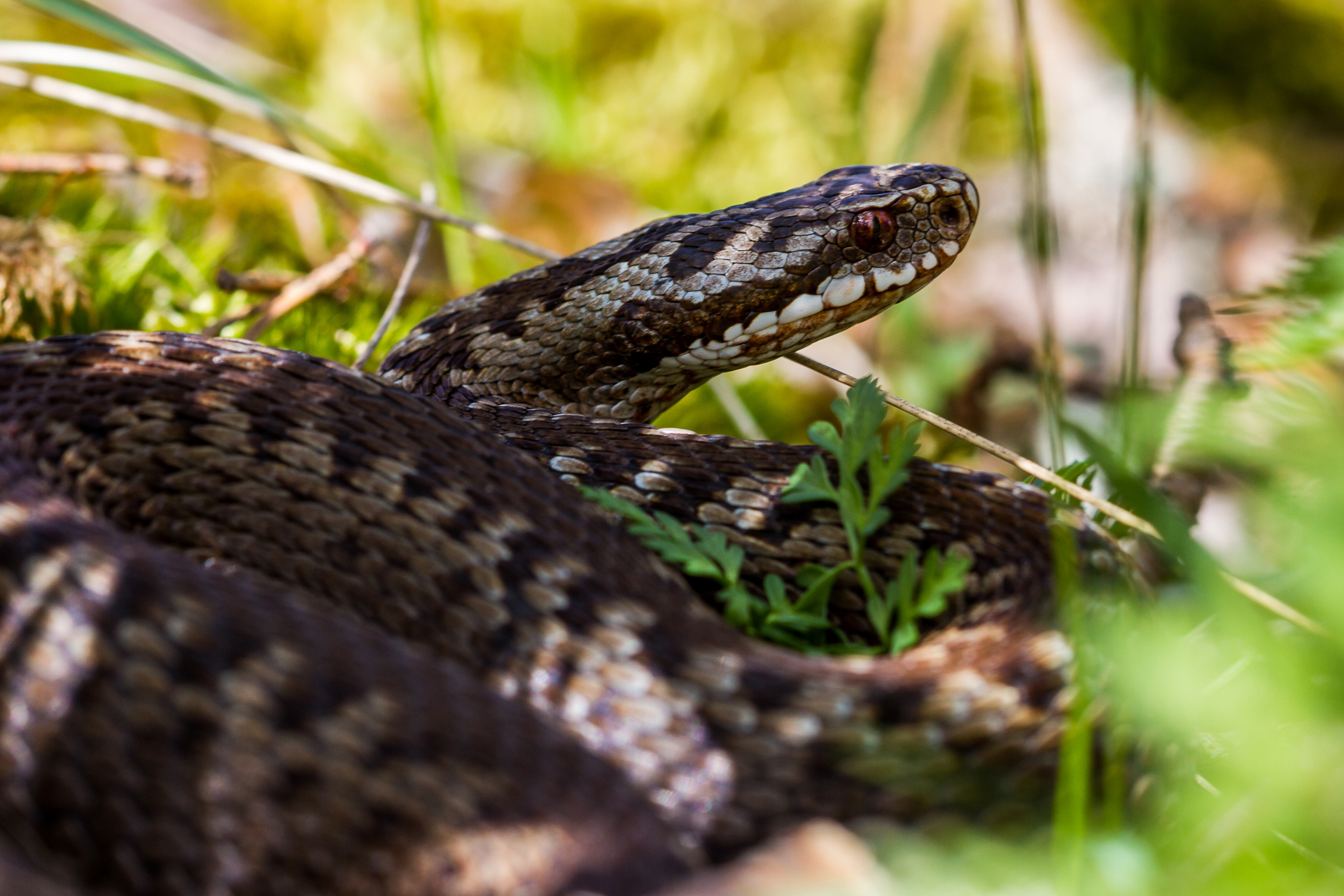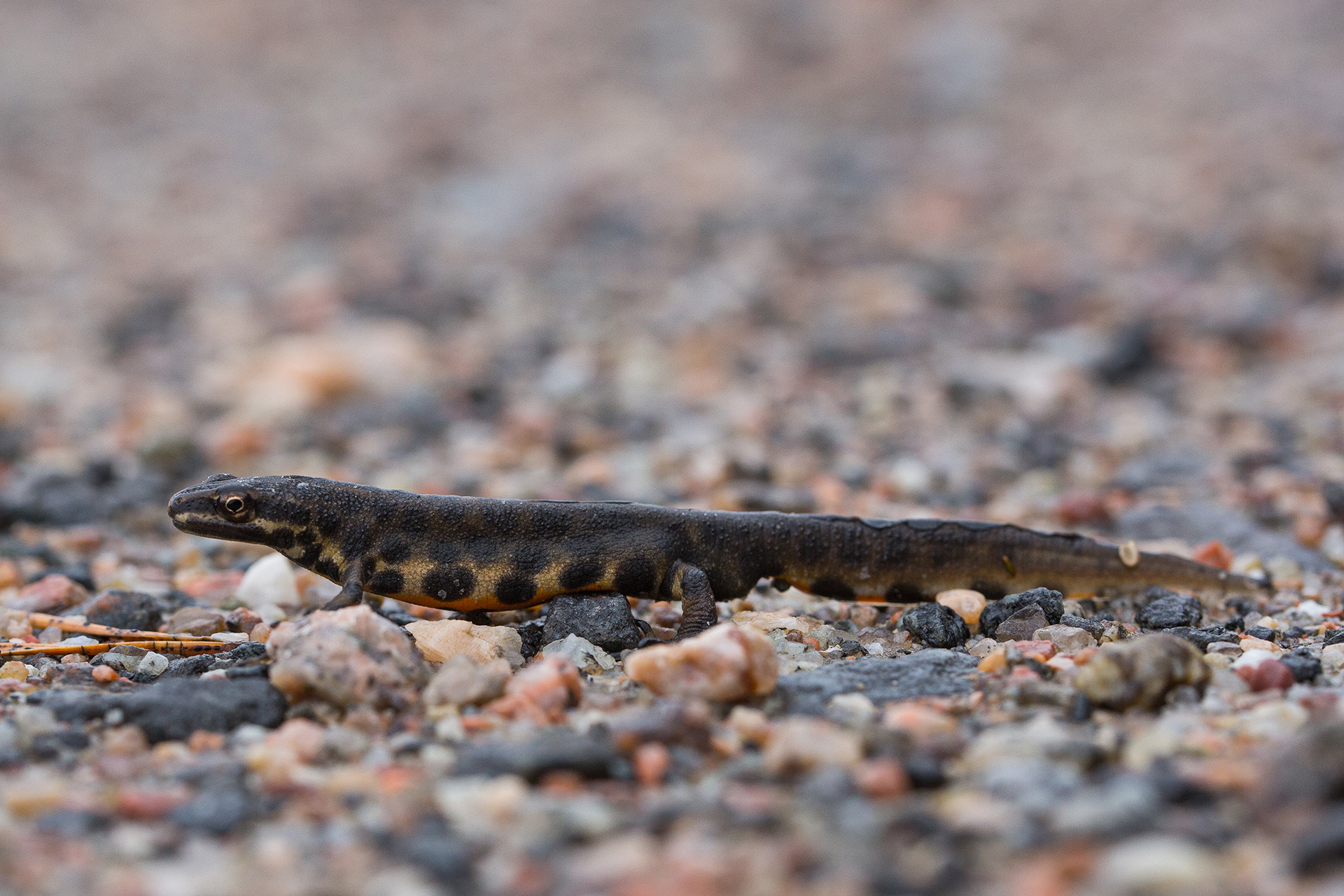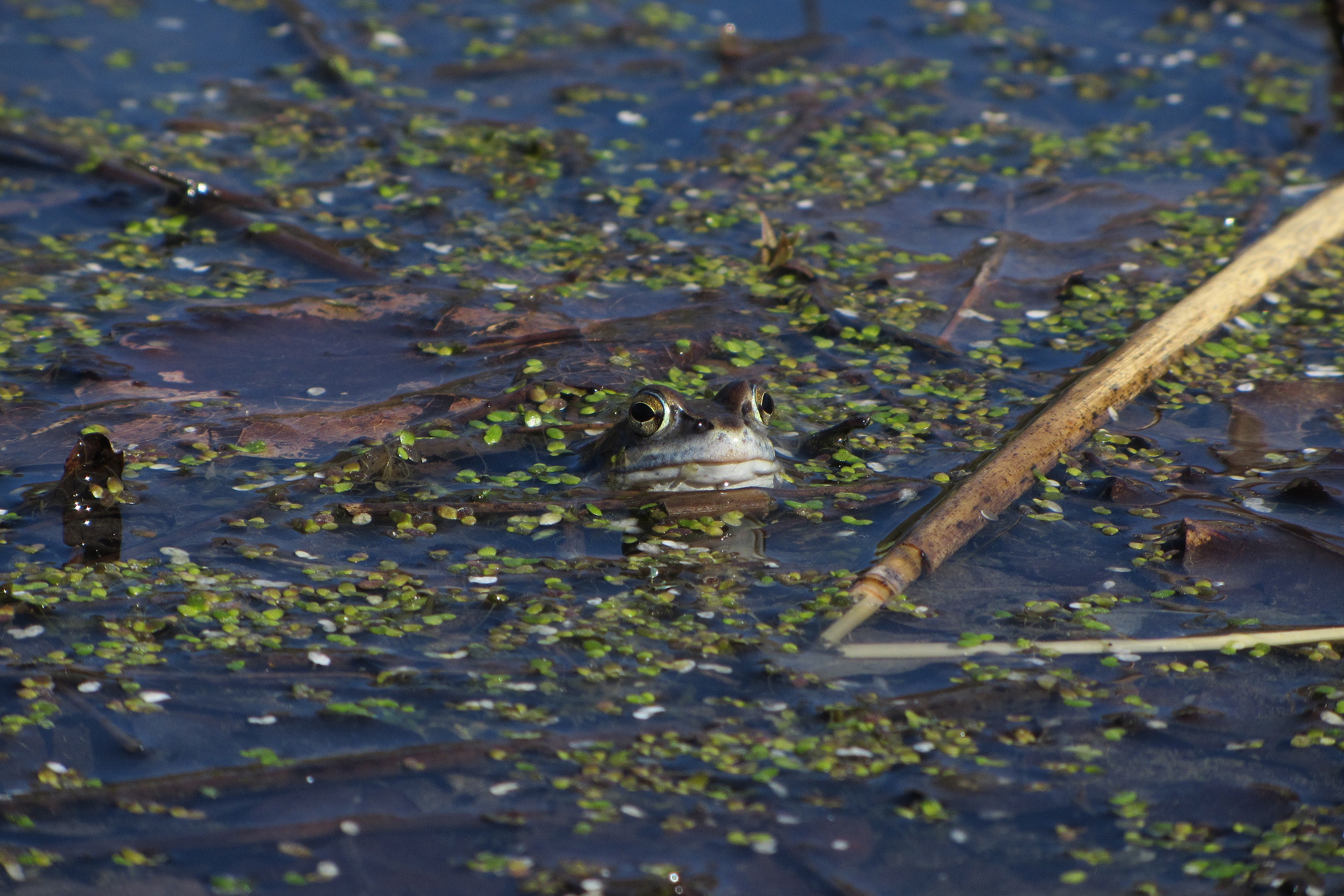Reptiles on land and in water
Snakes seek out the warmth of the spring sun. Snakes are ectotherms (i.e. “cold-blooded”), due to which they favour southern ridges that get plenty of sunshine and places where they are protected from the wind when basking. Two species of snake are found on Ruissalo: the common European adder and the grass snake.
The grass snake is non-venomous, prefers coastal areas and is also an accomplished swimmer. The grass snake is Finland’s largest snake, capable of growing to over one metre. Grass snakes are typically dark in colour and often have distinctive yellow spots on the backs of their necks, though there are also individuals nearly devoid of spots.
The common European adder is the only venomous snake found in Finland. Luckily it only bites when it feels it has no other choice and always tries to hide or flee before doing so. Common European adders come in both brown and grey-black. They usually have a distinct zigzag pattern on their backs, by which the species is easy to identify, but some individuals are almost completely black. Viewed up close, the common European adder has a triangle-shaped head, and their pupils are vertical ovals. The common European adder prefers drier habitats than the grass snake, such as rocky regions and the edges of fields.
From a human standpoint, the common European adder and grass snake are both useful animals, as they prey on moles, which can otherwise cause significant damage to crops. The grass snake is protected under the Nature Conservation Act, but common European adders also deserve protection, as their numbers have dwindled in many areas due to human activity.
